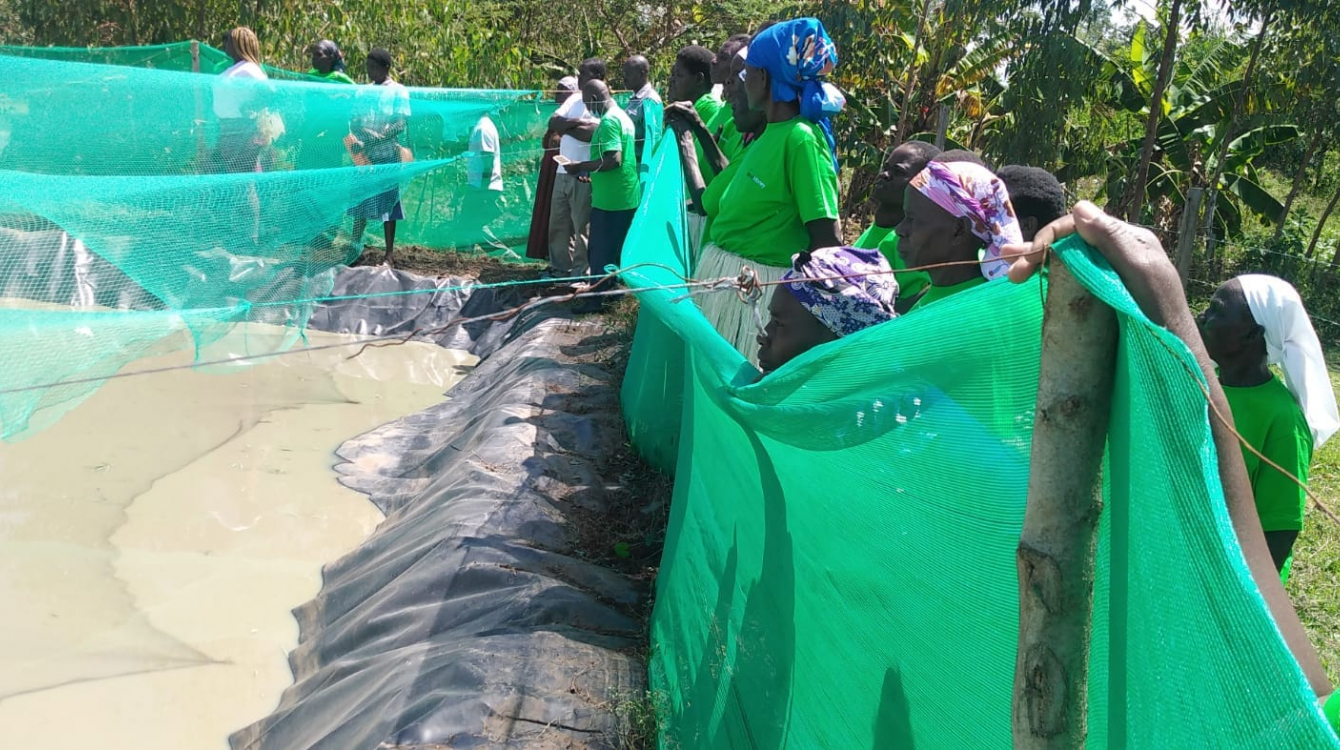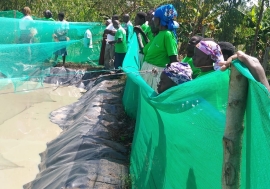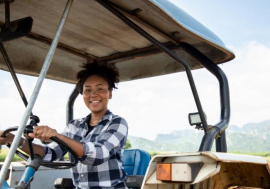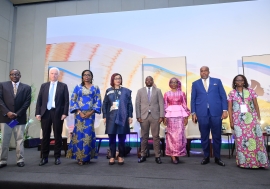Grassroots women in Africa have devised tools to help them fight for their land rights and have access to land, something they have been denied for a long time.
These tools are also helping women at community level to build solidarity among themselves to enable them to negotiate with their respective governments, raise awareness and amplify their voice over issues concerning land, such as disinheritance, property grabbing, land eviction.
At a session on grassroots women’s engaging customary structures for just and equitable land governance at local level during the fourth Conference on Land Policy (CLPA) in Kigali, Rwanda, earlier this month, various women’s groups presented the tools they are using to access land and create awareness about their land rights. These groups are part of the international Huairou Commission - an international, women-led network that builds the capacity of grassroots women’s organizations.
From their presentations, it was clear that local solutions to sensitive issues such as land rights can be found if local authorities, women, government, and non-governmental organizations join hands.
For example, Ms. Violet Shivutse, the leader of Shibuye Community Grassroots said women groups in rural western Kenya have organized themselves into groups called Collective Women Farmers which they use as a tool to fight for land access for food production.
“When women work as individuals, it becomes so hard to access agricultural extension officers because of shortage of these officers. This is a challenge in East African countries. However, under the collective group, women farmers are able to identify a demonstration centre and get an agricultural extension officer to attend to them regularly,” said Ms. Shivutse.
“The women’s group and the agricultural officer then develop a workplan and use part of their land as a training and demonstration centre where other women farmers come to see and learn and then replicate the same practices,” she added.
Another tool the women are using is mapping to secure and access land. Mapping is used to address issues around climate change, eviction, and succession challenges.
To use mapping as a tool Ms. Shivutse says the women first come up with a core team of leaders and a spokesperson to lead the process, then engage the other members to ensure that the community rallies behind them. They then identify what they want to map. They use drawings, videos, pictures, and personal testimonies, through which they identify challenges such as land eviction and disinheritance.
In the process they document other issues that are indirectly related to land ownership and access like the number of children out of school as a result of eviction, or food insecurity.
“We do this so that it’s not about politicizing the issues of land and women. Because land is about power, people think women are just looking for wealth,” she said.
“The mapping process reveals other issues that are undermining development. When you connect land issues to education, which everyone values in the community, then there is solidarity even from the community leaders. When you link it to food security, everyone rallies behind the issue to ensure that there is no hunger.”
Ms. Shivutse noted that mapping had become the baseline of how grassroots women can engage the entire community on issues related to land.
Lobbying and community dialogue, she said, works hand-in-hand with mapping. From the findings of mapping tools, the women are able to engage the community leaders for action plans which include relocation of people evicted, how to communicate eviction, how to ensure that the safety and privacy of women and their children is considered during eviction, or remuneration.
The mapping reports also help to influence policy discussions and set priorities related to women and land issues.
The use of the social tenure domain model as a tool that is being implemented in countries such as Zambia and Uganda, Ms. Shivutse said, begins with the mapping. Women then engage everyone else in the community, including the youth, on the traditional land management system, including when land titles do not exist. This has prompted joint titling where husbands, wives and their children are recognized as having a stake in family land. This is important because when a person dies, the spouse remains secure on their land.
Women’s group have also embraced land leasing, by an individual or a group. Through group leasing, the members get sufficient land area to set up demonstration plots on which they can practice conservation agriculture.
However, the challenge is that issues of land leasing have not been streamlined in some African countries. To beat this challenge, the Shibuye grassroots women’s group in 2017 drafted guidelines on land leasing to ensure access to land by women, and formulated key issues they experienced in land leasing, which served as terms of reference for the guidelines.
Furthermore, they nominated community representatives to draft the guidelines. This led to land lease guidelines being adopted.
Madagascar
Lilia Ravoniarisoa, the leader of the Federation of Women Farmers in Madagascar, said in her country, up to a third of the rural population are without land because most land is government or community-owned. In addition, up to 70 per cent of family tasks are done by women, yet women do not inherit land due to local customs and high illiteracy levels which hinder their access to land.
Ms. Ravoniarisoa women’s groups have mapped land in every region in the country – including community land which they protect by replanting mangrove trees.
They then sell the mangrove by products for income. The wood is used for building coastal houses, while the roots and leaves are used for medicinal purposes.
“Over 90 hectares has been obtained from local authorities and we have requested for 300ha to replant the trees. The aim is to reduce the vulnerability of women by increasing their income and food security,” said Ms. Ravoniarisoa.
“Women's groups use the community land leased from the authorities to address food insecurity and lack of resources through agriculture. The leases are long-term but renewed every year. This has increased women’s income as well as decision-making in their households,” Ms. Ravoniarisoa said.
Ms. Ravoniarisoa notes that the women plan to form cooperatives at the grassroots level to enable them to have more power in discussions on land issues. They do this by pooling resources which enables them to negotiate for land ownership and use with one voice.
In the South West region, the group has convinced the local authorities to give them part of the community land at no fee for reforestation.
In other regions they have land where women are planting algae and practicing fish and crab farming.
“We have market access because we produce organic products,” she said, adding that through dialogues, women are empowered and are more aware of their land rights.


















